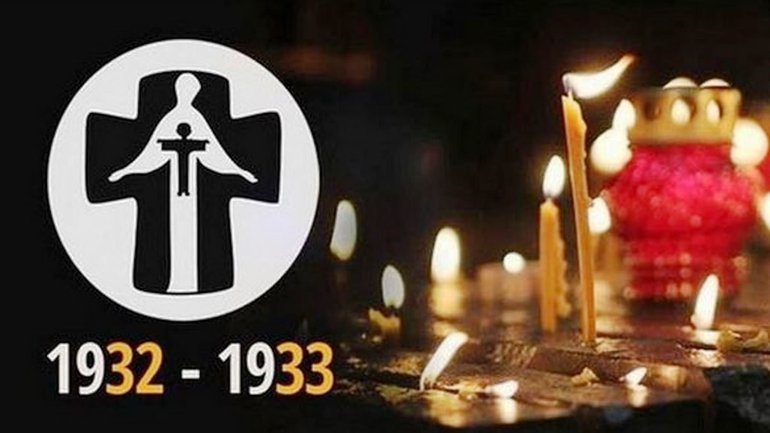Today is the Day of Remembrance of the Victims of the Holodomor-Genocide of 1932-1933

This year, for the third time, we will honor the victims of the communist genocide in the context of Russia's full-scale genocidal war against Ukraine. Today's tragic events show that living memory is extremely important. Those who commit crimes against humanity must be condemned by the international community, and the victims must be honored with dignity.
Today, at 15:30, a prayer service will be held in Kyiv at the Holodomor Victims Memorial (3 Lavrska St.) with the participation of the hierarchs of the Orthodox Church of Ukraine and the Ukrainian Greek Catholic Church.
In the twentieth century, Ukrainians experienced three famines: 1921-1923, 1932-1933, and the famine of 1946-1947. The largest was the famine of 1932-1933, which is called the genocide of the Ukrainian people by the Stalinist regime.
The Holodomor was preceded by the forced collectivization of agriculture, the “dekulakization” of peasants, a grain procurement campaign, and mass terror in the countryside. The terror of famine that operated in Ukraine for 22 months was a deliberate and purposeful policy of the Stalinist government, whose strategy and tactics were implemented beginning in 1928. This punitive and repressive action was aimed at subduing the Ukrainian peasantry and destroying independent peasant farms, the socio-economic foundations of the Ukrainian nation.
The mass famine in Ukraine was preceded by a number of events. In particular, on November 18, 1932, the Central Committee of the Communist Party of the Soviet Union issued a resolution, “On Measures to Strengthen Grain Procurement,” which provided for punishment for failing to fulfill grain procurement plans: farmers were punished with in-kind fines, i.e., confiscation of a 15-month meat ration. Subsequently, potatoes and lard were added to the list of compensatory foods, and at the end of the year, long-term storage products were added. In addition, the Resolution “On the Elimination of Counterrevolutionary Nests and the Defeat of Kulak Groups” issued on the same day allowed for the confiscation of bread from peasants under the article “counterrevolutionary crimes.”
A few days later, on November 26, an order was issued by the People's Commissar of Justice and the Prosecutor General of the Ukrainian SSR, which emphasized that “repression is one of the most powerful means of overcoming class resistance to grain procurement.” Thus, the artificially created famine became a well-thought-out and carefully disguised punitive operation.
First of all, the grain they had grown was taken away from Ukrainian peasants, and then they were deprived of their last food supplies through numerous in-kind fines and searches. In December 1932, food trade was banned in 82 districts of Ukraine, and supplies of industrial goods were also stopped. In early 1933, the peasants were deprived of their last hopes for salvation by being banned from leaving the famine-stricken Ukraine. Left without bread, peasant families ate various surrogates: corn cobs and stalks, sifted husks, dried straw, rotten watermelons and beets, potato peels, acacia pods, crushed bark and tree leaves.
According to official figures, the famine that lasted for 22 months in Ukraine claimed about 4 million lives.
For decades, the topic of the Holodomor was taboo. Under the communist regime, even talking about the famine of those years was strictly forbidden. Research on this tragedy began only in the late 1980s.
After the beginning of the full-scale invasion of Russia, consideration of the issue of recognizing the Holodomor of 1932-1933 as genocide of the Ukrainian people intensified in a number of countries, and parliaments around the world began to recognize the Holodomor as genocide of the Ukrainian people.
On December 15, 2022, the European Parliament supported a resolution recognizing the Holodomor of 1932-1933 as genocide of the Ukrainian people. MEPs also called on Russia, as the successor to the USSR, to apologize for the actions of the Soviet regime against Ukraine.
In November 2006, the Verkhovna Rada recognized it as genocide of the Ukrainian people.
Ukraine, citing data from scientific and demographic expertise, claims that the total number of human losses from the Holodomor-Genocide of 1932-33 is almost 4 million, and the losses of Ukrainians in terms of the unborn are more than 6 million.









